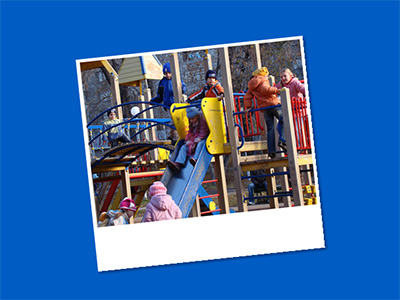 |
Course 28: Commitment to Quality in School-Age Programs |
2.00 |
School-age child care programs were prevalent during World War II. Many mothers worked outside the home to support the war effort and needed care for their children. When the war ended, school-age child care programs disappeared almost overnight as mother chose to stay at home. School-age programs emerged again in the late 1960’s in response to the vast numbers of mothers across the nation who were re-entering the workforce. National surveys in the 1970’s indicated that at least two-thirds of mothers with school-age children were again employed outside the home. The divorce rate was increasing as well as the number of households headed by a single parent. As a result, many elementary school children spent hours alone from 3:00 to 6:00 when school was out. Clearly, there was a growing need for out-of-school support services for school-age children.
In the 1970’s programs were commonly known as school-age child care or extended day programs. Those establishing programs gave their attention to increasing the availability and affordability of after school services for working parents. By the mid 1970’s, child care advocates also emphasized the importance of providing quality programs. Child care advocates, parents, educators, public policy experts, and representatives from a wide variety of child care and community organizations began a national dialogue to explore and identify the components of quality school-age child care services. Today, national, state, and local organizations are working to educate the public about quality school-age child care services and assist school-age child care professionals achieve quality programming in their communities.
It is essential for OST professionals to be aware of the national and state organizations, research, and practices that focus on the development of quality school-age child care programs. This makes it possible for OST professionals around the country to learn about the dimensions of quality OST/SACC programs and participate in the important process of continuous improvement of their own programs. |
 |
Course 17: Developing and Implementing Effective School-Age Outdoor Environments and Interest Areas |
2.00 |
School-age children need daily opportunities to exercise, relax, and participate in a wide range of outdoor activities. The hours children spend in after school programs are often the best hours of the day for getting fresh air and enjoying the out of doors while it is still daylight. School-age programs can provide safe, secure settings where children can enjoy the out of doors. Even if outdoor space is limited, regular participation in a wide variety of physical activities in the open air can help children develop healthy exercise habits that will last a lifetime. |
 |
Developing and Implementing Effective School-Age Outdoor Environments and Interest Areas |
2.00 |
School-age children need daily opportunities to exercise, relax, and participate in a wide range of outdoor activities. The hours children spend in after school programs are often the best hours of the day for getting fresh air and enjoying the out of doors while it is still daylight. School-age programs can provide safe, secure settings where children can enjoy the out of doors. Even if outdoor space is limited, regular participation in a wide variety of physical activities in the open air can help children develop healthy exercise habits that will last a lifetime. |
 |
Developing Effective Outdoor Environments and Interest Areas (Collection) |
2.00 |
School-age children need daily opportunities to exercise, relax, and participate in a wide range of outdoor activities. The hours children spend in after school programs are often the best hours of the day for getting fresh air and enjoying the out of doors while it is still daylight. School-age programs can provide safe, secure settings where children can enjoy the out of doors. Even if outdoor space is limited, regular participation in a wide variety of physical activities in the open air can help children develop healthy exercise habits that will last a lifetime. |
 |
Developing Effective Outdoor Environments and Interest Areas: Assessing Space and Planning Activities |
1.00 |
School-age children need daily opportunities to exercise, relax, and participate in a wide range of outdoor activities. The hours children spend in after school programs are often the best hours of the day for getting fresh air and enjoying the outdoors while it's still daylight. School-age programs can provide safe, secure settings where children can enjoy the outdoors. In this course, we will explore how to assess space and plan activities in outdoor environment and interest areas. |
 |
Developing Effective Outdoor Environments and Interest Areas: Moving Indoor Interest Areas Outside |
1.00 |
School-age children need daily opportunities to exercise, relax, and participate in a wide range of outdoor activities. The hours children spend in after school programs are often the best hours of the day for getting fresh air and enjoying the outdoors while it's still daylight. School-age programs can provide safe, secure settings where children can enjoy the outdoors. In this course, we will explore strategies for moving indoor interest areas into outdoor environments. |
 |
Sharing Information with Parents and Other Professionals (Collection) |
2.00 |
School-age children work on many important developmental tasks during their out-of-school hours. One of the important responsibilities of OST staff is to help parents stay in touch with how their children are growing and developing during program hours. In addition to parents, professionals who work with children in other settings are often interested in learning how children spend their time when they are not at home or school.
Portfolios are excellent tools for bringing children’s experiences in OST programs to life for parents during planned parent conferences. They are also valuable tools for sharing helpful information about children with other professionals. |
 |
Course 36: Sharing Information with Parents and Other Professionals |
2.00 |
School-age children work on many important developmental tasks during their out-of-school hours. One of the important responsibilities of OST staff is to help parents stay in touch with how their children are growing and developing during program hours. In addition to parents, professionals who work with children in other settings are often interested in learning how children spend their time when they are not at home or school.
Portfolios are excellent tools for bringing children’s experiences in OST programs to life for parents during planned parent conferences. They are also valuable tools for sharing helpful information about children with other professionals. |
 |
Sharing Information with Parents and Other Professionals |
2.00 |
School-age children work on many important developmental tasks during their out-of-school hours. One of the important responsibilities of OST staff is to help parents stay in touch with how their children are growing and developing during program hours. In addition to parents, professionals who work with children in other settings are often interested in learning how children spend their time when they are not at home or school.
Portfolios are excellent tools for bringing children’s experiences in OST programs to life for parents during planned parent conferences. They are also valuable tools for sharing helpful information about children with other professionals. |
 |
Sharing Information with Parents and Other Professionals: Policies & Conferences |
1.00 |
School-age children work on many important developmental tasks during their out-of-school hours. One of the important responsibilities of school-age care staff is to help parents stay in touch with how their children are growing and developing during program hours. In this course, we will explore policies and conferences. |











